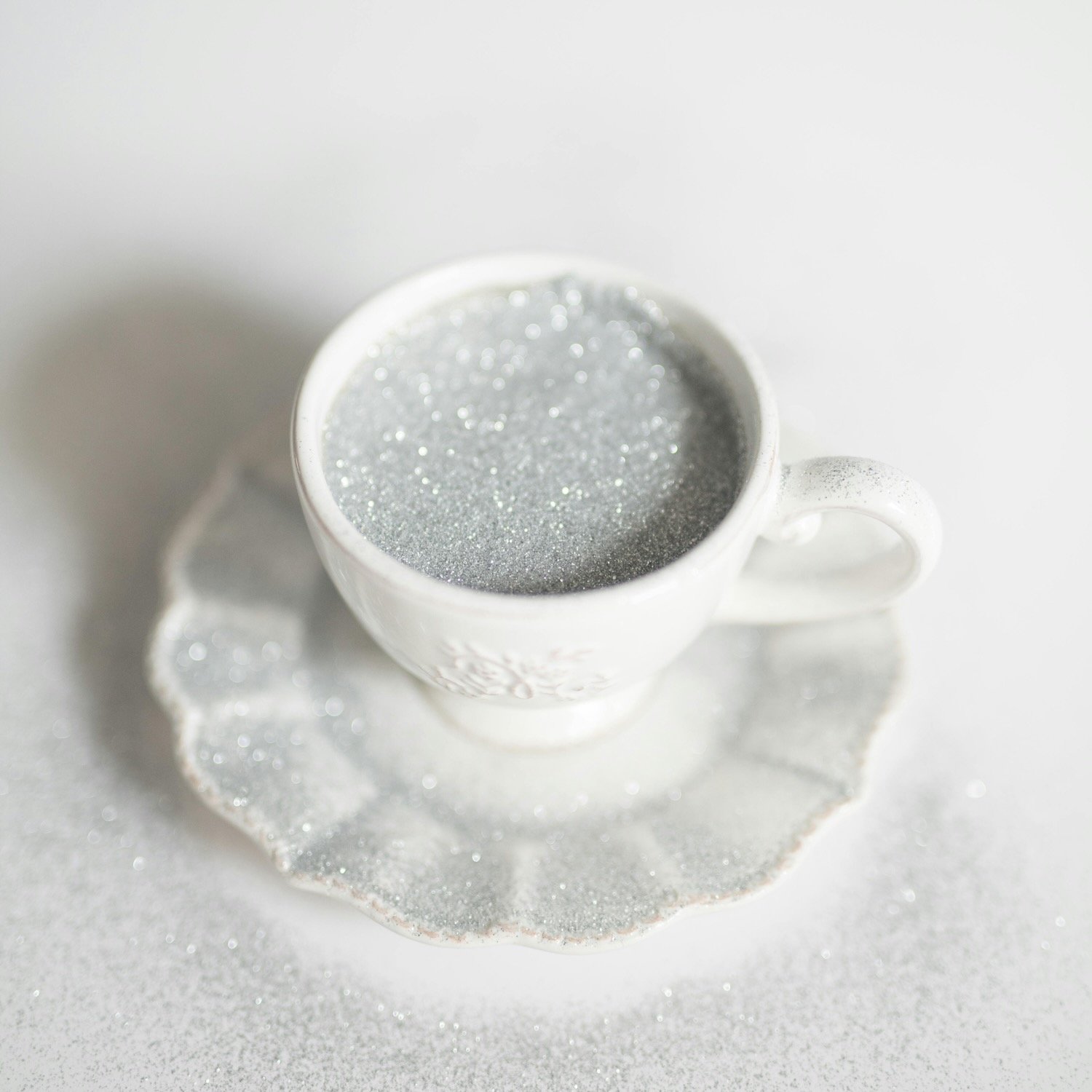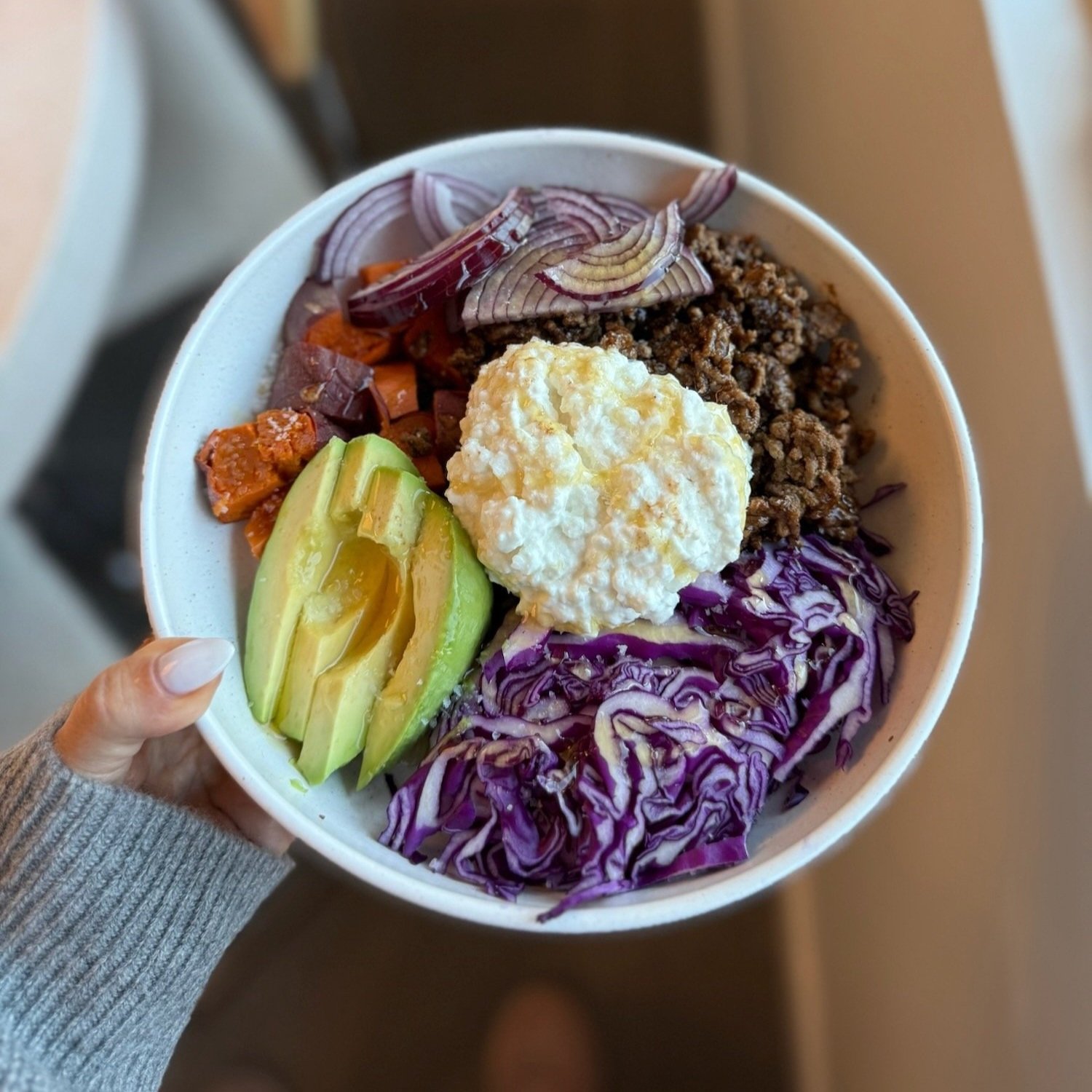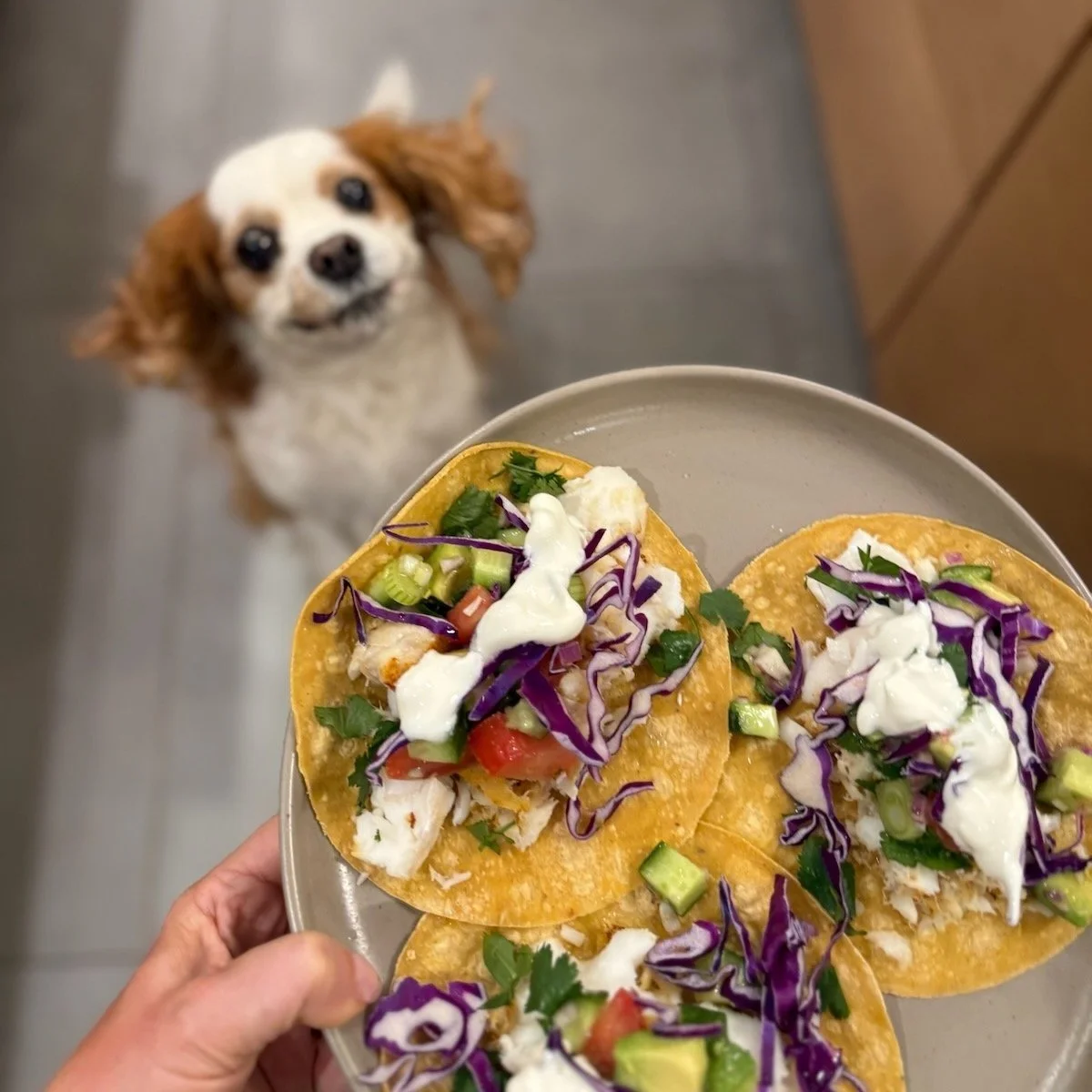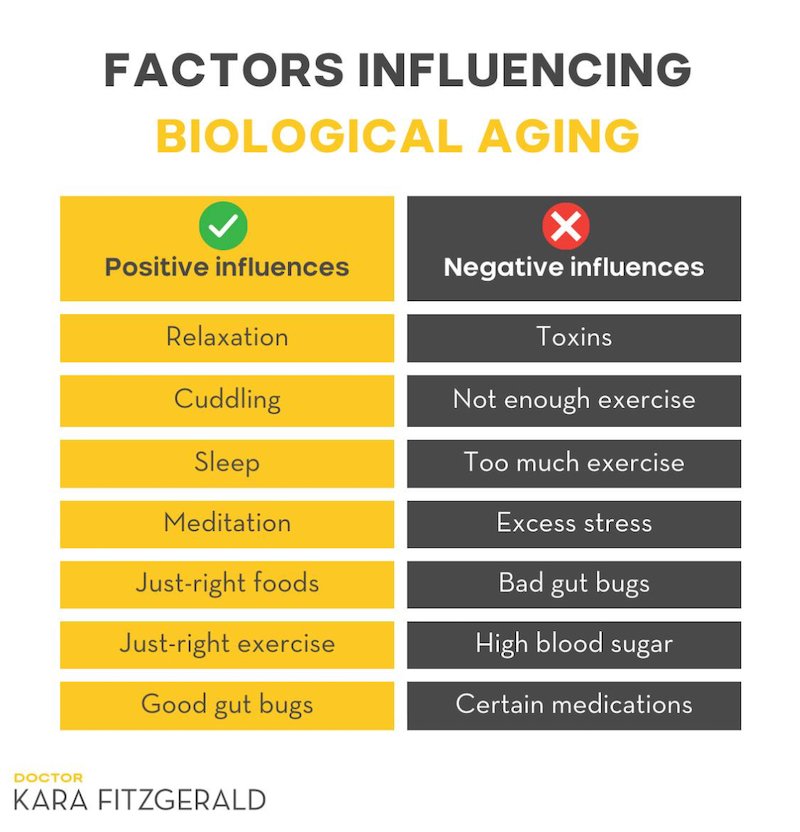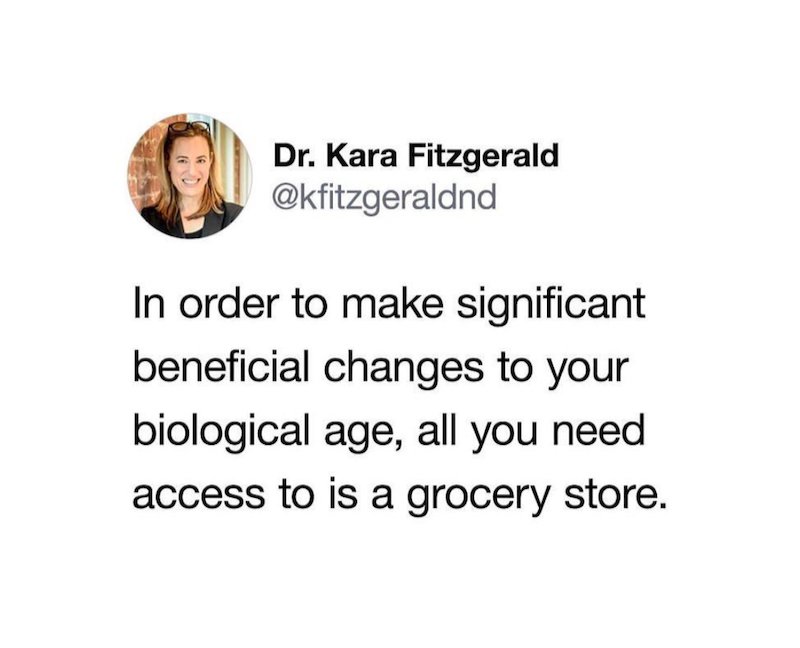These 4 Lifestyle Edits Could Actually Reverse Aging
They may not blow your mind, but they will take exactly 4.6 years off your biological age.
by The Candidly Team
Alright. The title of this article is practically begging for a disclaimer. So, here it is. Aging isn’t bad. We won’t go so far as to dig up some empty cliché comparing it to the life-cycle of a rose or some nonsense, but it isn’t bad.
However, it can feel bad. We don’t mean in the tearing-into-our-frown-lines-in-front-of-the-mirror sort of way. We mean it in the I’m-so-achy-I-can’t-bend-over-to-take-off-my-left-shoe kind of way.
We all want to live as long and healthily as possible. In that respect, there’s nothing wrong with wanting the process of aging to be something that takes longer. Or that we hate less.
Enter a new study.
A team led by epigenetics researcher Dr. Kara Fitzgerald asked a group of participants to take on specific healthful practices or “lifestyle interventions” for a total of eight weeks. At the end of that time, DNA tests showed that most of the group was able to rewind their biological age by as much as 11 years, though the mean among them was closer to 4 years. In either case, we’ll take it.
But what are these “healthful practices?” And what does reversing your biological age even mean?
Allow us to break it down.
First off, what the hell even is biological age?
Biological age, in this case, refers to the state your cells are in as opposed to the years you’ve been on this planet. It’s measured by looking at epigenetic data in your DNA.
As you might expect, everything we eat, drink, breathe, do, and stress about can add or subtract years to our biological age. So some of us who feel young(er) inside…kind of might be.
The findings:
So let’s get into it. But first, one more disclaimer. Fun, I know.
The study was only done on six people. HOWEVER, they were all women between the ages of 46 and 65. And five out of six of them were Benjamin Buttoned by as much as 11 years. Or to put it in scientific terms, saw a reduction in biological age, ranging from 1.22 to 11.01 years. And remember, this was in a mere eight weeks.
What’s fascinating about this study is not that good, healthy habits could slow current or future aging, but the possibility that it could rewind some of the aging we’ve already done.
Because five of the six women were considered “healthy” to begin with, each of them already having a biological age younger than their chronological age, researchers felt the positive changes were more likely to be “unrelated to disease improvement and instead might be attributed to underlying aging mechanisms.” So like we said, Benjamin Button stuff.
And, of course, more research on more people is needed. But many of the interventions that contributed to these changes do seem like things that could be good for us anyway, so we say, why not learn all about them?
So, we did.
The 4 Age-Reversing Lifestyle Interventions:
We realize things like diet, exercise, and sleep aren’t as sexy as say a “chemical cocktail” that could reverse aging. (Please don’t leave to look that up. We promise this stuff gets good.) However, if you’re only going to skim the headers, you might miss how specific the study actually got in terms of lifestyle tweaks.
Also worth noting is that even though the participants stuck to these goals at an average rate of just under 82%, all except one saw years fall off their biological age.
This is what they were asked to do:
1. DIET AND SUPPLEMENTS
The women studied were asked to stick to a “set of dietary recommendations high in known epinutrients.” And they did so at a rate of about 84%. The diet itself was designed to support methylation, a metabolic or biochemical process that, according to UCLA Health, can influence the activity and behavior of genes and therefore, affect aging.
The basic ideas were to:
Consume largely plant-centered meals
Restrict simple carbohydrates
Try to stick with organic
Include specific portions of key nutrient-dense animal protein
Keep up hydration
Avoid added sugar/candy, dairy, grains, legumes/beans
Stick to a very basic level of intermittent fasting for 12 hours a day (so not eating between 7pm and 7am)
Minimize plastic food containers
To get more specific, these were the guidelines of what to consume. Veggies were measured raw, chopped, and packed, so you can get a sense of the precise portions we’re talking about here.
WEEKLY
3 servings of 3-ounce liver, preferably organic or an encapsulated liver supplement
5 - 10 eggs - ideally free-range, organic, omega-3 enriched eggs
DAILY
2 cups of dark leafy greens - (such as kale Swiss chard, collards, spinach, dandelion, or mustard greens, but NOT romaine, iceberg, or spring mix)
2 cups cruciferous vegetables (such as broccoli, cabbage, cauliflower, Brussels sprouts, bok choy, arugula, kale, mustard greens, watercress, rutabaga, kohlrabi, radish, Swiss chard, turnip)
3 additional cups colorful vegetables - (no white potatoes or sweetcorn)
1-2 medium beets
4 tbsp pumpkin seeds (or pumpkin seed butter)
4 tbsp sunflower seeds (or sunflower seed butter)
1+ serving methylation adaptogens. (These can include: 1/2 cup berries (wild is best), 1/2 tsp rosemary, 1/2 tsp turmeric, 2 medium cloves garlic, 2 cups green tea (brewed 10 minutes), 3 cups oolong tea (brewed 10 minutes)
6 oz of animal protein - grass-fed, pastured, organic and hormone/antibiotic-free
2 servings of low glycemic fruit
Aim for 8-cups of water per day.
Include “healthy” oils: such as coconut, olive, flaxseed and pumpkin seed oil, balance types of fat
Dietary supplements consisting of a probiotic containing 40 million CFU of Lactobacillus plantarum 299v. L. plantarum and a fruit and vegetable powder, rich in additional polyphenolic compounds, twice a day.
2. EXERCISE
Participants were asked to complete “a minimum of 30 minutes of physical activity at least 5 days a week, at an intensity of 60-80 percent of maximum perceived exertion.”
3. SLEEP
The goal was to average a minimum of 7 hours of sleep nightly.
4. STRESS MANAGEMENT
The study subjects were asked to enage in in two, 10-minute breathing sessions a day to help alleviate stress. Interestingly, this was the hardest task for them to complete with only around a 57% adherence rate.
While sticking to any checklist involving our health isn’t without the usual challenges, the idea that we could have a say in how and why we age on a cellular level is pretty thrilling. And who among us couldn’t use another positive boost to inspire us to make the kinds of choices that might not just delay aging, but help us not feel like garbage while doing it?
This article is for informational purposes only. It is not intended to be used in place of professional advice, medical treatment, or professional care in any way. This article is not intended to be and should not be a substitute for professional care, advice or treatment. Please consult with your physician or healthcare provider before changing any health regimen. This article is not intended to diagnose, treat, or prevent disease of any kind. Read our Terms & Conditions and Privacy Policy.




